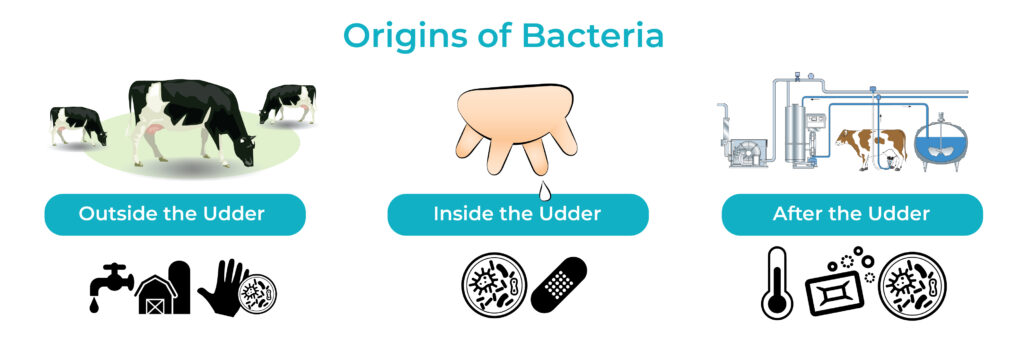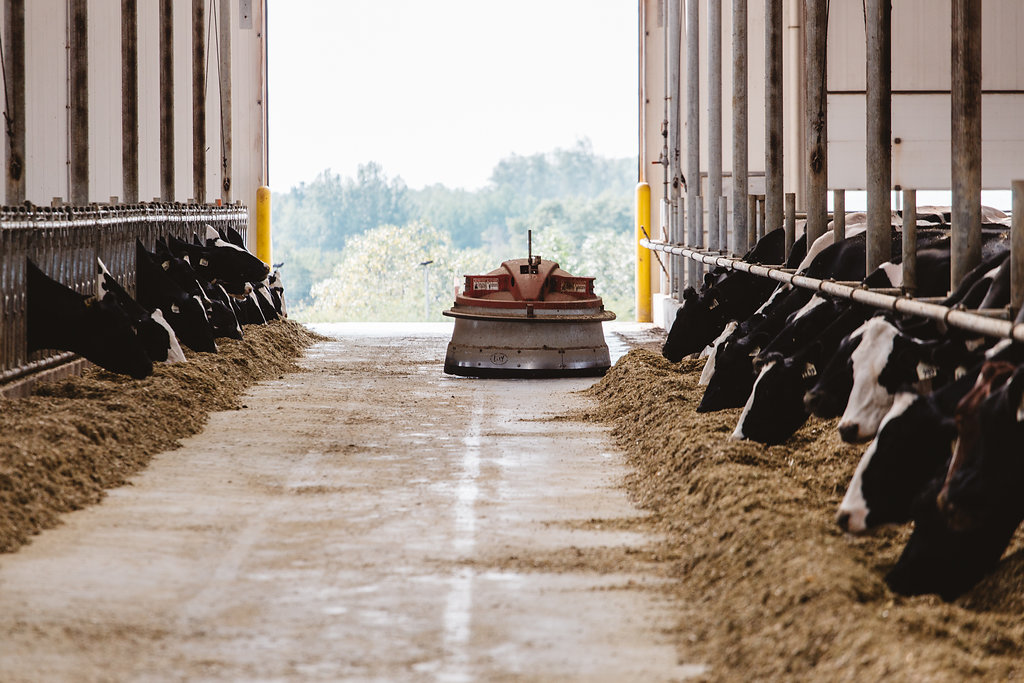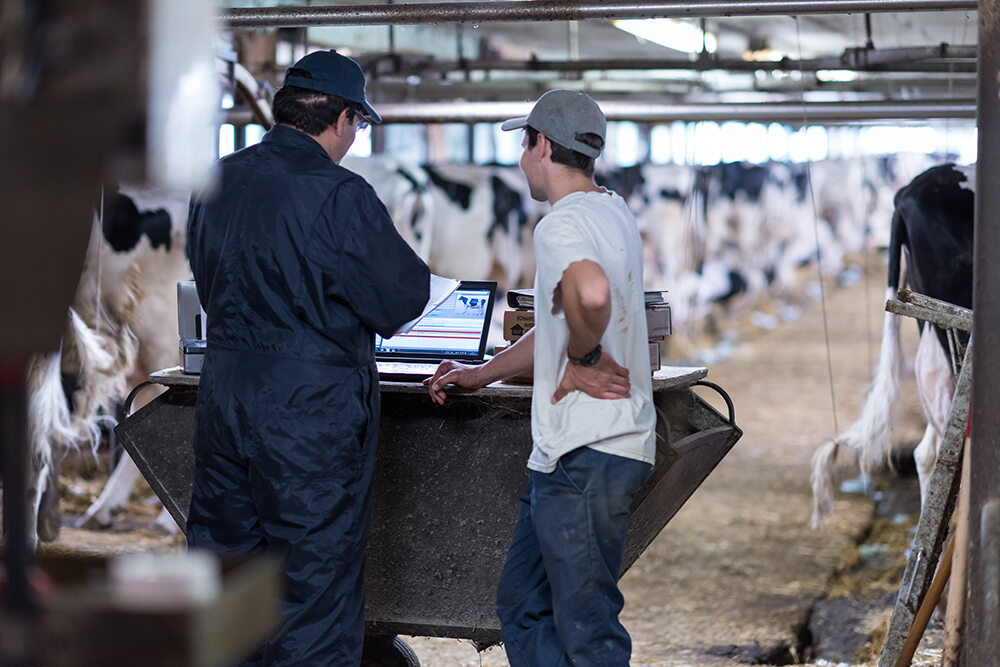On-farm origin of raw milk bacteria and contamination
- July 6, 2023

In collaboration with Dr Daryna Kurban
Why we care about bacteria count?
The microorganism profile (bacteria and others) of milk, also known as the microbiota, is unique to each dairy farm. Because it is dynamic, the microbiota of farm’s bulk tank milk reflects its environment, its application of good management practices, the herd health status and their overall equipment maintenance practices.
Milk naturally contains beneficial bacteria, such as lactic acid bacteria, which contribute to the production of high-quality dairy products. However, raw milk can be contaminated with undesirable bacteria, which can be harmful to both dairy herd and to dairy consumers. In addition, contamination caused by the growth of spoilage bacteria can make milk unsuitable for dairy processing. It is, of course, impossible to produce bacteria-free milk, but it is possible to keep contamination by these undesirable bacteria to a minimum.
The bacterial count of bulk tank milk, measured using an instrument called BactoScanTM, is one of the criteria for milk quality in Canadian dairy production.
Milk shipped must have a count of less than 122,000 Individual Bacteria Cells (IBC) per millilitre to comply with the established standard. A high bacterial count is an indicator of raw milk contamination.
What happens on the farm?
Where do bacteria enumerated by the BactoScanTM come from? Milk contamination can occur at any stage of the milk production process: in the cow’s udder, during milking, when milk is stored in the bulk tank, and so on. Bacteria found in milk can originate from 3 main sources:
I. Outside the Udder: The Cow’s environment
Bacteria are naturally present on teat skin, but also in the farm’s environment, associated to manure, soil, bedding, water, etc. Anything that comes in contact with teat ends can transfer bacteria into the milk during milking. There are 4 mechanisms for transferring bacteria from the environment to the udder:
- Direct transfer – When a cow lies down in a dirty stall or alley (free stalls).
- Leg transfer – When a cow lies down, and her udder comes in contact with soiled legs.
- Splash transfer – When liquids from the ground (mud, manure, water, etc.) splashes onto the udder.
- Tail transfer – When the tail comes in contact with the udder (or when a tail dirties the udder, legs and/or flanks).
When good hygiene and cleanliness management practices, as well as milking procedures, are followed on farm, the bacterial count of milk is generally stable and within the standards because contamination caused by the cow’s environment is limited.
II. Inside the udder: Milk produced by the cow
Milk produced by a healthy cow is free of undesirable bacteria. On the other hand, a sick cow can shed potentially harmful bacteria in her milk. It is important to regularly diagnose diseases in a dairy herd, for example mastitis. Milk from a sick cow must be withdrawn, so as not to contaminate the milk in the tank.
The bacterial count linked to contamination from inside the udder depends on the type and extent of the problem:
- If the problem lies with a single or a few cows, it will manifest as a spontaneous increase resolved once the milk is withdrawn and the condition treated.
- If it is a herd-level problem, it will manifest as a more gradual and constant increase over time, until the problem is addressed.
Although certain bacteria can cause a significant spontaneous rise in the bacterial count of bulk tank milk, contamination from inside the udder is rarely the main cause of a high bacterial count.
III. After milk exits the udder: Milking equipment and milk cooling and storage equipment
Milking equipment, milk cooling and storage are the most common cause of bulk tank milk contamination leading to an increased bacterial count.
In general, these increases are sudden and drastic, and then simply disappear once the issue has been addressed.
The main issues related to contamination via milking equipment are:
- Inadequate wash and sanitation that results in the accumulation of residues on equipment surfaces, which feed bacteria and promote their persistence.
- Inadequate milk cooling and storage temperatures that promote bacterial growth.
- Contaminated wash water that can leave bacteria on the equipment.
- Broken or worn equipment.
What does this mean for my farm?
To date, there is no standard protocol or recipe for reducing milk bacterial counts on all farms. You must explore potential sources and critical entry points of bacteria specific to your farm – outside the udder, inside the udder and after the udder.
Thanks to the BactoScanTM analysis and regular DHI milk recording, you can monitor your herd more effectively and react quickly should a problem arise. Do not hesitate to talk to your veterinarian to find the best solution for managing your farm’s bacteria count. You can also reach out to your local milk quality advisors for help.










